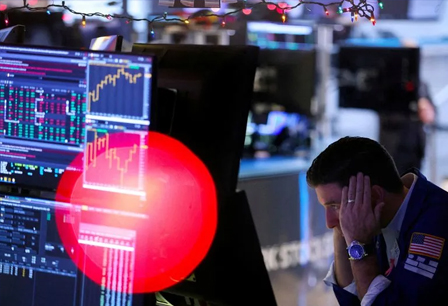Wall Street economists expect Tuesday morning's release of the consumer price index for August to show a 0.1% monthly decline, thanks to falling gas prices. That would bring the CPI inflation rate down to 8% from 8.5%. But the outlook for Federal Reserve policy and the Dow Jones hinges on what happens with core inflation, which excludes volatile food and energy prices. The core CPI is expected to rise 0.3% on the month, lifting the annual core inflation rate to 6.1% from 5.9%.
A softer-than-expected reading on core inflation might reduce odds that the Fed will back a third-straight 75-basis-point rate hike on Sept. 21. As of Monday afternoon, financial markets are pricing in 92% odds of another jumbo-size move. Those overwhelming odds suggest it would take a shockingly weak inflation reading to put a 50-basis-point move in play.
A tame inflation report could reinforce expectations that the pace of Fed rate hikes will slow after September, however.
Fed Focused On Core Inflation
"Core inflation is a better predictor of inflation," Fed chief Jerome Powell said in his July 27 news conference.
In prior months, when oil and gas prices were surging, the Fed focused on headline inflation. But now that gas prices are falling, the Fed's tune has changed. Core prices are again the focus, which is a return to normal.
Usually, Powell explained, policymakers can look through a short-term jump in prices of commodities like oil. But inflation has been too high for too long, so there's increased risk that households will begin to expect higher inflation in the future. That can lead to behavioral shifts, like more aggressive bargaining for wage hikes and increased spending — before prices rise further.
In other words, headline inflation only matters when it's bad for an extended period, like in the first half of 2022. So if oil prices start to rise again, the focus may again shift.
The core CPI, which covers 77.4% of household budgets, includes goods other than food and energy. It also includes nonenergy services, such as rent, medical services, transportation and education. Such services make up 56% of household spending.
Biden Approval Rating Gets Big Bounce From Young Americans
Goods Vs. Services Spending
Recently, inflation in core goods categories has been trending down, easing to 7% in July from a peak of 12.3% in February. The drop in goods inflation has come as supply-chain problems have been ironed out, high prices have curbed demand, and consumers have shifted more spending to services, reversing effects of the pandemic.
"Real spending on goods has declined modestly in each of the past two quarters," Fed vice-chair Lael Brainard said last week.
Retailers like Walmart (WMT) and Target (TGT) have been cutting prices after finding themselves with too much inventory.
Yet inflation in nonenergy services prices has yet to subside, rising 0.4% on the month in July and 5.5% from a year ago. The annual increase matched June's 30-year high.
Take Our Anonymous Survey And Tell Us What You Like (And Don't Like)
About Your Online Broker.
Until inflation begins to ebb for this category of spending, the Fed may not be convinced that inflation pressures are easing. That's because price increases for such services are closely linked to the tight job market and high wage growth. If wages weren't rising more than 5%, big price increases would hurt demand and balance out markets.
The August jobs report saw some improvement in labor force participation, lifting the unemployment rate to 3.7%, despite solid job growth. More of the same could begin to ease wage pressures, but at the moment, the labor market remains much too tight for the Fed.
Dow Jones Rises Ahead Of CPI Report
On Monday, the Dow Jones Industrial Average climbed 0.7%, building on last week's rally. The S&P 500 rose 1.1% and the Nasdaq composite 1.3%.
Stocks are trying to fight back from their walloping after Fed chief Powell's Aug. 26 speech in Jackson Hole, Wyo. Powell's terse remarks focused on the Fed's mistakes from the 1970s, which fueled double-digit inflation. He signaled that policymakers will keep interest rates higher for longer to avoid a repeat, casting doubt on a pivot to rate-cutting in 2023.












